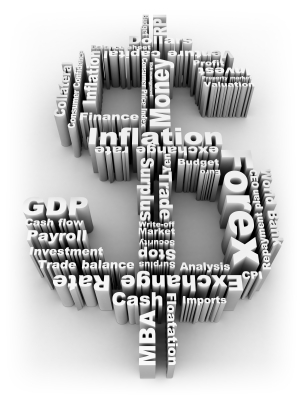Financial account
Syllabus: Explain the three main components of the financial account, specifically:- direct investment,
- portfolio investment and
- reserve assets.
 The
financial account records transactions associated with changes of
ownership of a country's foreign assets and liabilities. The financial
account is divided into four main sub-accounts: direct investment,
portfolio investment, other investment and reserve assets, each showing
inflows of money (credits) and outflows of money from a country
(debits).
The
financial account records transactions associated with changes of
ownership of a country's foreign assets and liabilities. The financial
account is divided into four main sub-accounts: direct investment,
portfolio investment, other investment and reserve assets, each showing
inflows of money (credits) and outflows of money from a country
(debits).
(i) Direct investment is productive investment. It is investment in plant, equipment, machinery or factories, i.e. investment that will help with the process of wealth creation.
|
Direct Investment means acquiring a significant ownership stake in a foreign business. “Direct investment is investment undertaken by an entity resident in one economy in an enterprise resident in another economy. The purpose of the investment is to obtain or sustain a lasting interest in the enterprise and exercise a significant degree of influence in its management. According to the IMF’s current criteria, owning ten percent or more of a business qualifies as having a “lasting interest” and “a significant degree of influence in its management” If you own less than ten percent, you’re treated as a portfolio investor. http://faculty.washington.edu/danby/bls324/macro/categories.html |
(ii) Portfolio investment, on the other hand, is investment in paper assets like shares and government bonds. The only purpose of portfolio investment is financial gain, so they do not involve foreigners' participation in the management of the domestic firms. There may be both inflows and outflows of portfolio investment.
(iii) Other financial flows - this heading can cover a range of
short-term monetary flows like bank deposits from overseas residents,
loans into a country from abroad and so on - not on the syllabus but included for completeness
(iv) Reserve assets - all countries hold reserves of foreign currency (usually gained from times when there are trade or investment surpluses and this section measures any changes in these reserves. If the government influences the exchange rate, e.g. wants to appreciate the rate, then they may sell some of their foreign currency reserves and buy their own currency instead.
A deficit or surplus on the current account is offset with an equal
and opposite surplus or deficit on the capital and/or financial account.
Therefore overall the Balance of payments MUST balance (go back the cartoon on page 72 - why is it incorrect?)
In practice, however, as
data for the current account and financial
account come from different data sources, a balancing item called net
errors and omissions is included in the balance of payments account.
This covers transactions not officially recorded. For example and
surprisingly drug barons tend not to declare to the authorities where
their income comes from so when cocaine or heroin is `imported´ it is
not counted yet the payments to overseas suppliers will be spent on
declared items so it looks like there is an imbalance. In reality there
is not so errors and ommissions are included.
